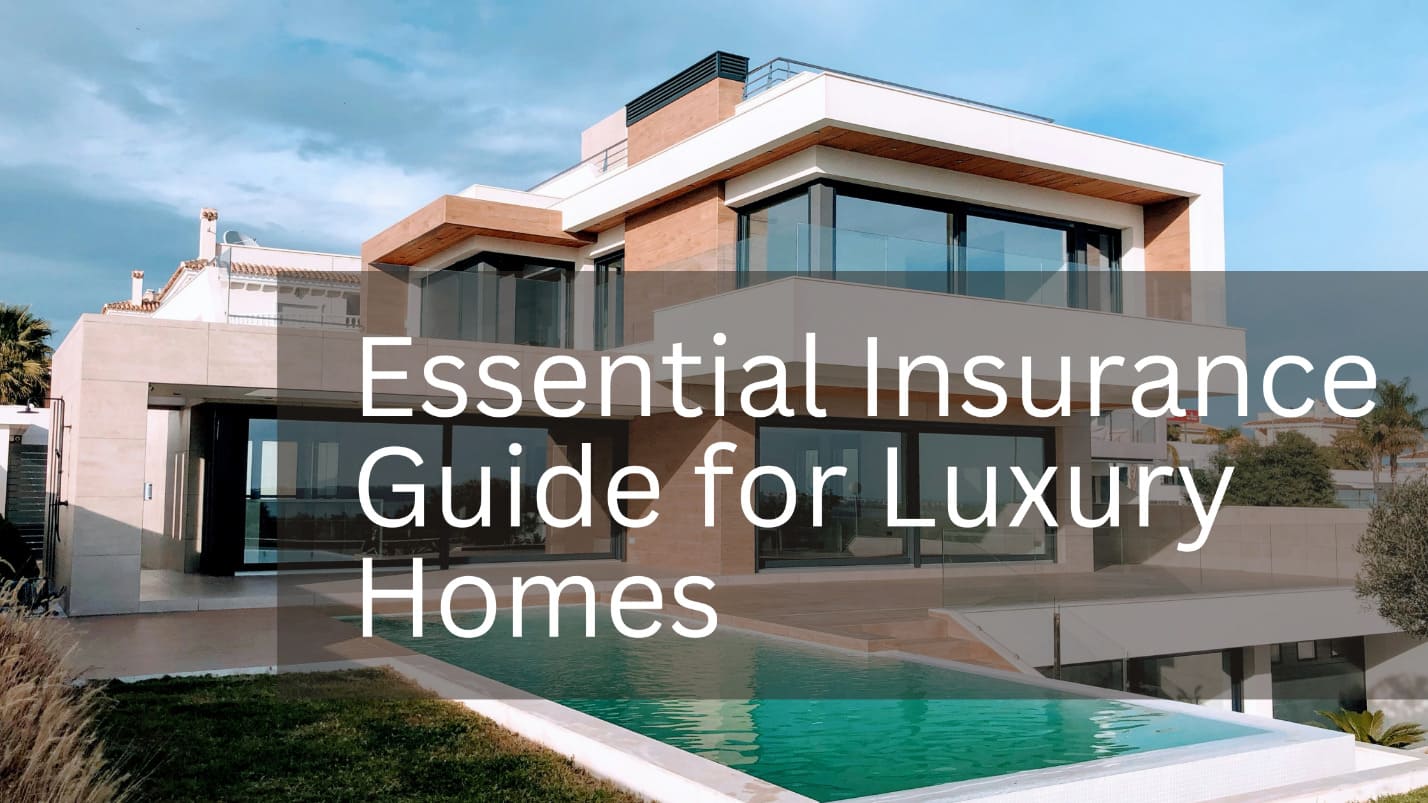Owning a luxury home in the United Kingdom is a privilege that comes with unique insurance needs and considerations. From historic estates in the countryside to contemporary penthouses in urban centers, luxury properties require comprehensive insurance coverage to protect against high-value assets, unique risks, and legal liabilities. This article explores the essential insurance essentials for luxury homeowners in the UK, covering key aspects of coverage, risk management strategies, factors influencing premiums, and legal considerations.

Understanding the Unique Needs of Luxury Homeowners
Luxury homes in the UK are distinguished by their high property values, bespoke architectural designs, premium materials, and often expansive grounds. Insurance for these properties must go beyond standard homeowners policies to address specialized risks such as:
- High Reconstruction Costs: Luxury homes often feature custom craftsmanship and high-end materials that increase rebuilding costs in case of damage or loss.
- Valuable Contents: Expensive art collections, antique furniture, jewelry, and other high-value possessions may exceed the limits of standard personal property coverage.
- Enhanced Security Risks: Larger properties with advanced security systems, smart technology, and additional amenities (e.g., pools, guest houses) pose increased liability risks.
- Historic or Listed Status: Historic homes or properties listed under conservation regulations require specialized insurance to cover restoration costs and compliance with conservation guidelines.
Essential Coverage Options for Luxury Homes
To adequately protect their investments, luxury homeowners in the UK should consider the following essential insurance coverage options:
- Building Insurance: Provides coverage for the structure of the home against perils such as fire, lightning, storm damage, and vandalism. Policies should reflect the full rebuilding cost, considering materials, architectural features, and inflation.
- Contents Insurance: Covers personal belongings inside the home, including furniture, electronics, clothing, and valuables. High-value items such as fine art, collectibles, and jewelry may require separate appraisals and specialized coverage.
- Personal Liability Insurance: Protects homeowners against legal claims for bodily injury or property damage caused to others on their property. Given the higher liability risks associated with luxury homes, adequate liability limits and umbrella policies are recommended.
- Additional Living Expenses (ALE): Reimburses homeowners for temporary accommodation and living expenses if their home becomes uninhabitable due to a covered loss.
- Flood Insurance: Standard policies typically exclude flood damage. Properties located in flood-prone areas should obtain flood insurance through the government’s Flood Re scheme or private insurers.
- Listed Building Insurance: Covers repair or restoration costs for historic homes listed under conservation regulations. Policies should address unique requirements for materials, conservation guidelines, and compliance with heritage regulations.
- Legal Expenses Insurance: Covers legal costs associated with disputes related to the property, including property disputes, planning permission issues, and neighbor disputes.
Factors Influencing Insurance Premiums
Several factors influence the cost of insurance premiums for luxury homes in the UK:
- Property Location: Geographical location affects insurance rates due to varying risks such as weather hazards (e.g., flooding, subsidence), crime rates, and proximity to emergency services.
- Rebuilding Cost: The estimated cost to rebuild the property, including materials, labor costs, and architectural features, determines insurance premiums.
- Security Measures: Installation of security systems, alarms, surveillance cameras, and smart home technology can qualify homeowners for insurance discounts.
- Claims History: A history of insurance claims on the property can impact premiums. Maintaining a claims-free record and proactive risk management practices can help mitigate premium increases.
- Property Features: Additional amenities such as swimming pools, tennis courts, and guest houses increase liability risks and may require higher insurance coverage.
- Occupancy Type: Whether the property is owner-occupied, rented out, or used as a second home can affect insurance rates and coverage requirements.
Risk Management Strategies for Luxury Homeowners
To minimize risks and potentially lower insurance premiums, luxury homeowners in the UK can implement the following risk management strategies:
- Regular Maintenance: Schedule regular inspections and maintenance of the property, including roofing, HVAC systems, plumbing, and electrical systems, to prevent potential hazards and ensure property upkeep.
- Security Enhancements: Invest in robust security systems, including alarms, surveillance cameras, motion detectors, and smart home technology, to deter theft and vandalism.
- Fire Prevention Measures: Implement fire safety measures such as installing fire extinguishers, smoke detectors, and sprinkler systems, and maintaining clear vegetation around the property.
- Weatherproofing: Protect the property against weather-related risks such as flooding, storms, and subsidence by implementing appropriate preventative measures and ensuring adequate insurance coverage.
- Emergency Preparedness: Develop and practice a disaster preparedness plan to safeguard the property and family members in emergencies such as severe weather events or security threats.
Legal and Regulatory Considerations
Navigating legal and regulatory requirements is essential for luxury homeowners in the UK to ensure compliance and comprehensive insurance coverage:
- Listed Building Consent: Obtain necessary planning permissions and listed building consents for renovations, alterations, or repairs to historic or listed properties.
- Heritage Regulations: Comply with conservation guidelines and heritage regulations when making changes to historic homes or properties located within conservation areas.
- Insurance Policy Review: Carefully review insurance policies, including coverage limits, exclusions, deductibles, and endorsements, to understand rights and responsibilities as a policyholder.
- Claims Process: Familiarize yourself with the insurance claims process, including reporting requirements, documentation, and timelines, to facilitate efficient claims resolution in the event of a loss.
Conclusion
Insurance for luxury homeowners in the UK is essential for protecting valuable assets, mitigating liability risks, and ensuring financial security against unexpected events. By understanding essential coverage options, factors influencing insurance premiums, risk management strategies, and legal considerations, homeowners can make informed decisions to safeguard their investments effectively. Proactive maintenance, enhanced security measures, and compliance with regulatory requirements contribute to minimizing risks, optimizing insurance coverage, and maintaining peace of mind for luxury homeowners in managing their prestigious residential properties.
